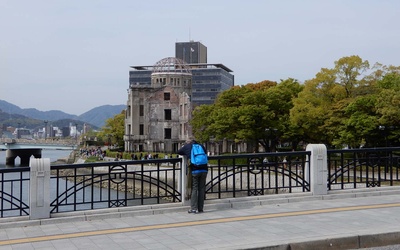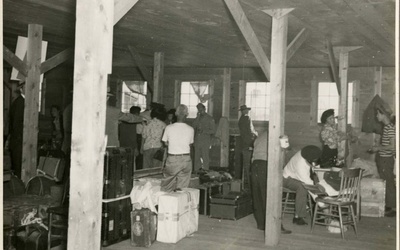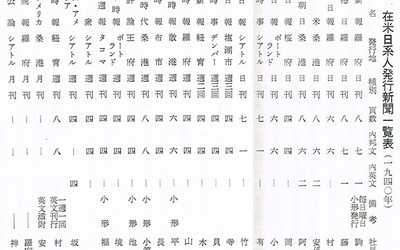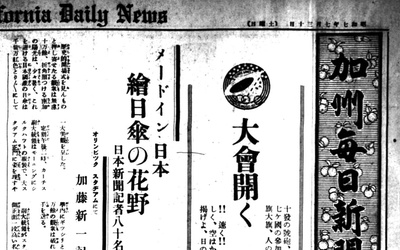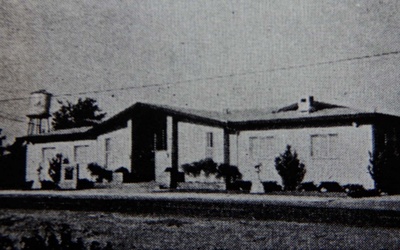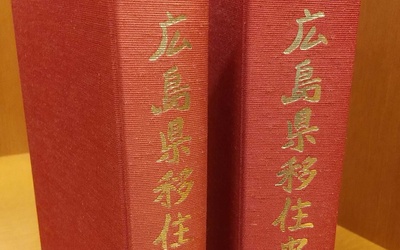The man who collected the records of the first generation: Following in the footsteps of Shinichi Kato

Around 1960, Kato Shinichi drove around the US, visiting the footsteps of the first generation of Japanese immigrants and compiling the results in "A Hundred Years of Japanese Americans in the US: A Record of Their Development." Born in Hiroshima, he moved to California and became a journalist in both Japan and the US around the time of the Pacific War. Although he escaped the atomic bombing, he lost his younger brother and sister, and in his later years he devoted himself to the peace movement. We follow the energetic path of his life, which spanned both Japan and the US.
Stories from this series
No. 17: Because Hiroshima is the hometown of second-generation Americans?
July 23, 2021 • Ryusuke Kawai
On August 20, 1942, eight months after the outbreak of war between Japan and the United States, Shinichi Kato returned to Japan on a Japanese-American exchange ship and became a reporter for the Chugoku Shimbun newspaper in his hometown of Hiroshima. It is not known when or how he got the job, but his experience as a reporter for a Japanese-language newspaper in America likely played a part. The Chugoku Shimbun1 is a regional newspaper with its headquarters in Hiroshima …
Part 16: Detained and returned home on an exchange ship
July 9, 2021 • Ryusuke Kawai
Kato Shinichi did not leave a detailed record of what happened to him as a leading figure in the Japanese community as the editor-in-chief of a Japanese newspaper after the outbreak of war between Japan and the United States. He only wrote that "When war broke out between Japan and the United States, I was imprisoned in the Mizola Internment Camp in Montana, and returned to Japan on the first exchange ship from New York in June of the same …
15th: Becomes editor-in-chief of the American Business Daily...
June 25, 2021 • Ryusuke Kawai
Last time, I briefly touched on the strike issue surrounding Rafu Nichibei, the Japanese newspaper in Los Angeles where Kato Shinichi worked as a reporter, but this point is written in more detail in the section "Publications by Japanese Americans in the United States" in the "Centennial History of Japanese Americans in the United States," which Kato edited. According to the book, Abiko Hisataro, who was also a businessman, founded the newspaper "Nichibei" in San Francisco, and then expanded into …
#14 Becoming a reporter for a Japanese newspaper
June 11, 2021 • Ryusuke Kawai
Kato helped his father on the farm in central California, and when his father returned to Japan, he moved to Pasadena, near Los Angeles, to work in landscaping. However, he soon became a reporter for a Japanese newspaper, which marked the beginning of his long career in journalism. Japanese language newspapers naturally emerged in immigrant communities in North America, Hawaii, and South America. This is because, with language barriers making it difficult to obtain information, information in Japanese is essential …
#13 My father called me to California
May 28, 2021 • Ryusuke Kawai
Let's follow the footsteps of Shinichi Kato's father, Matsujiro, after he moved to the U.S. It is not clear which port in Japan Matsujiro left from in 1900, or where he landed in the U.S. In his profile written in "A Centennial History of Japanese Americans in the United States," Shinichi himself wrote that after coming to the United States, Matsujiro "opened a Japanese restaurant in Fresno, Central California, and later farmed in Pareja..." However, according to his nephew, Junji …
No. 12 Is Religious Ethos the Foundation?
May 14, 2021 • Ryusuke Kawai
From "History of Emigration to Hiroshima Prefecture" As mentioned last time , Hiroshima Prefecture, where Kato Shinichi was born, was an "immigration prefecture" that sent out the largest number of people overseas during the Meiji period. Looking at the number of immigrants nationwide, we can see that there are large differences between prefectures. As someone from Kanagawa Prefecture, I was not familiar with overseas immigration, and none of my relatives or neighbors had gone overseas. However, while reporting in Hiroshima, …

